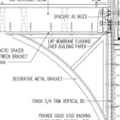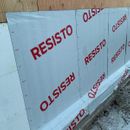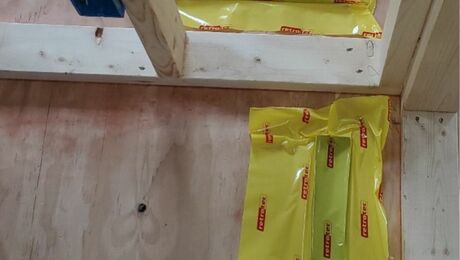ICF to Plywood Sheathing Transition
Good morning all,
Looking at the detail & transition from the exterior wall sheathing (cdx) where it abuts the ICF foundation.
As the photo shows, the sheathing is flush w the exterior face of foam. My proposed solution is to lap the Resisto ICF waterproof membrane 3” up onto the face of the sheathing, covering the transition joint. The sheathing will then receive the self adhered Henry Blueskin wrb which will lap over the membrane that same 3” inches. Cor-a-vent sv5 at the bottom/1x furring rainscreen and then siding to cover. The exposed ICF membrane will be covered with heavy gauge alum material or similar.
Does anyone take issue with this or see a way to improve?
alternatively, I considered tape flashing the joint, but this seems to potentially eliminate that step or need.
GBA Detail Library
A collection of one thousand construction details organized by climate and house part










Replies
Bump. Maybe this is just fine. So no comment needed.
Thank you!
Chris
Chris,
It all looks and sounds good to me.
The only issue I've seen with the Resisto is that is it NOT vapor permeable. I've seen it trap water behind it and hold it there for months. That won't hurt the ICF/concrete but behind the OSB, you will have rotting problems. Resisto is mainly designed to protect the ICF foam below grade. I would rather see a breathable membrane on the OSB portion. Something like SIGA Majvest or SIGA Fentrim. If it was an ICF wall from footing to roof, then you wouldn't have anything to worry about, but transitioning materials always requires special details.
So use the Resisto on the ICF portion but once it transitions to OSB, use a breathable membrane like SIGA Fentrim and transition to SIGA Majvest. I can already see in the photo that the Resisto is not stuck tight to the OSB portion, there are air pockets/gaps. Water will find its way into there and will get trapped.
See below photo. ICF wall transitioning to wood wall. They used Fentrim and then Majvest.
joat777,
He is using a permeable Henry Blueskin as a WRB on the sheathing above the ICF foundation.
Jack,
Thanks for the input. Malcolm is right. I noted that the self adhered WRB, Blueskin VP100, is vapor permeable and will cover the plywood sheathing -- lapping over the top edge of the Resisto by 3" so its a proper shingle lap preventing water from getting behind.
I could cut the top 3" off the Resisto and then tape the VP100 to it with Fentrim, that is definitley a good detail. But also cost and labor impacts
Chris,
"I could cut the top 3" off the Resisto and then tape the VP100 to it with Fentrim, that is definitely a good detail."
I prefer your solution. Why rely on adhesive to keep out water when you can use laps?
Thanks Malcolm.
I agree. The shingle-style lap makes me feel better too.
However, thinking about the vapor permeability, now I wonder if I should cut the 3" of Resisto off so its flush to the top of the ICF and then take the Blueskin VP100 lapped over that "joint" / transition. In this case the material covering the joint would be the WRB and also offer the permeability of the VP100.
What do you think?
graineryarchco,
It's much like putting strips of impermeable membranes over flanged windows. I think the sill-plate, bottom of the sheathing, and rim-joists have a good enough drying path though diffusion through the adjacent materials that the effect of the 3" piece of membrane is in the weeds. I also think the diminution in drying there is more than offset by the protection the membrane affords at the juncture between the two walls.
I have similar detail with ICF to a ZIP R-12 detail, using Colophene-ICF. We are running the Colophene to the sill plate, then placing the R-12 on top of ICF membrane.